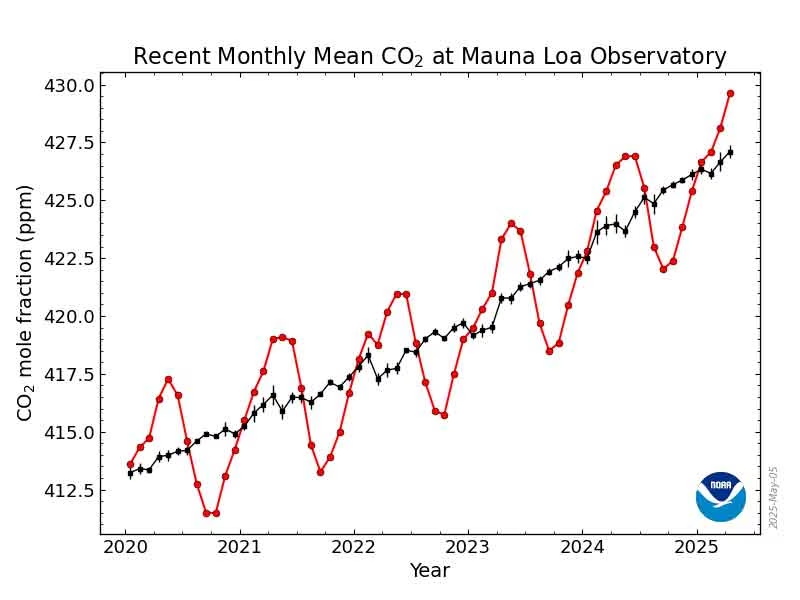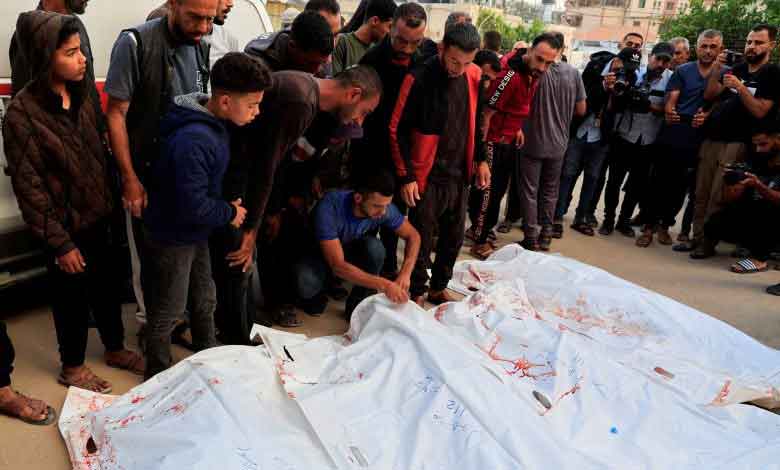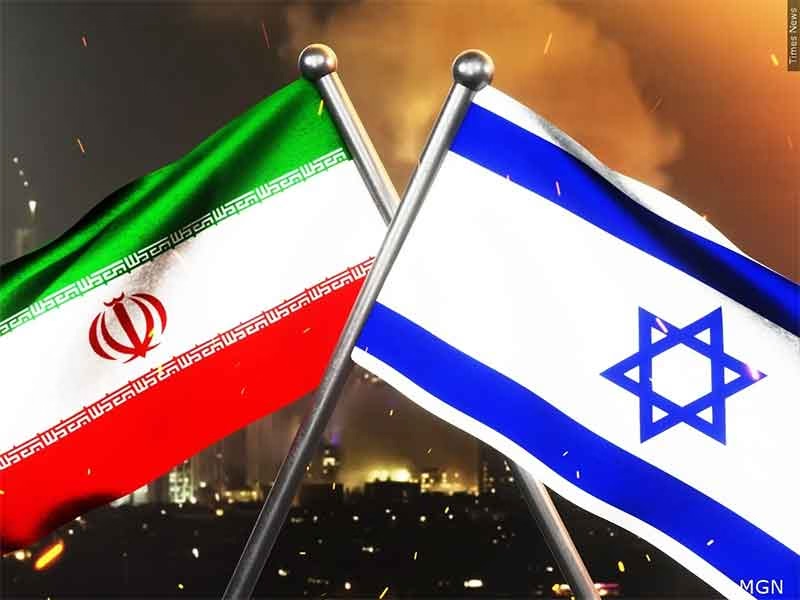
Interview with Dr. Santasabuj Das, (Director of National Institute for Occupational Health), regarding increasing impact of heat stress on informal workers’ life and livelihoods
Bhargav: Could you give a brief background of how did we reach at the present situation where climate change has directly resulted in frequent and intense stress phenomenon, especially in Global south countries? And how does the phenomenon of heat stress affect workers in different trades within the informal sectors of India?
Dr. Das: The heat, which is only increasing, is a direct result of climate change. It is quite evident to everyone. This is happening more frequently and rapidly nowadays. Climate change is seen when the weather patterns start showing ‘extreme’ days over long periods over several years or decades. The difference between weather change and climate change lies in the fact that weather over many days and over longer periods, is affected due to climate change. Weather can be sometimes unpredictable – it can be hot today and cooler tomorrow. But climate change does not work like that. It is a longer phenomenon where weather keeps getting worse. And (in India), it keeps getting warmer and warmer, it is not going to get reversed. So firstly, we need to explain to everyone why are we talking about extreme events? If we were talking about weather alone, then it is a different matter. But here we are talking about climate change. Impact of climate change is disproportionate on several countries, wherein India is one of them.
Southern countries are hotter then northern. There are several other things linked to climate change such as population growth, population density, rapid urbanisation, water scarcity, carbon and greenhouse gases emissions such as methane, carbon, etc, fossil fuel depletion, etc. It is a two-pronged crisis in India – we are not able to reverse the climate change effect, and on the other hand, we are not able to control the means and mechanisms needed to adapt with such rising heat phenomenon. It is in this situation; we are seeing the impact of climate change and heat on labour. Heat disproportionately affects the working classes more then anyone else. The reason for this is because he has to work continuously. It also affects those workers who labour in the outdoors such as those in agriculture, bricklins, loaders and unloaders in food market, vendors and hawkers, transportation workers, gig and platform workers, workers in tourism and sports. Further, those who work in indoors and lesser ventilated spaces, are also highly impacted. White collar workers have a choice that they don’t go outside for work. But for manual workers and daily wagers, there is no choice – they have to work either indoors or outdoors. The only thing that can therefore be done is adaptation and mitigation – controlling the work, work timings, external environment at work, etc. But here too, there are limitations. Workers are never going to compromise with the work. They are forced to work, irrespective of the conditions.
Now the major problem affecting their health can be understood as the acute effects such as heat exposure, in which heatstroke is a critical hazard. But it not as frequent. Other hazards include heat exhaustion, heatstress, heat rash, heat syncope (fainting), etc are more frequent. There are other acute hazards that affect internal organs too such as acute renal failure (kidney failure) where because of dehydration, the kidney’s filtering function stops and is not able to function. There are also chronic diseases because of heat exposure. This is seen in miners, agriculture workers. There is a chronic renal disease of unknown causes. It is also called Chronic Kidney Disease as in CKD, or UCKD (unknown causes). Diabetes and hypertension are generally the major triggers for these. Kidney stone is also an associated disease. But in UCKD, we were not able to identify the triggers. We later learnt that dehydration affects their kidney function severely. We have also seen a rise in cardiovascular diseases because of prolonged heat exposure.
We also need to talk about occupational injuries, the triggers for which is associated with heat. For instance, anxiety or need to complete work quickly, leads to inattentiveness and causes occupational injuries. Worker becomes injury-prone because of prolonged heat exposure, which in normal weather conditions he wouldn’t. His behaviour and work pattern changes because of prolonged heat exposure, which leads to increase in incidents of occupational injuries too. We can understand the direct effect of heat exposure as a spectrum from heat rash (lowest impact), to heatstroke (highest impact). It is here the role of industrial management and enforcement authorities is important – protecting the worker.
Bhargav: Could you talk about the 7-point programme developed by NIOH to counter heat stress?
Dr. Das: There is a 7-point programme that we (NIOH) have prepared. This is a heat illness prevention programme. It is prepared to ensure that workers don’t suffer from heat related illnesses. It is designed in such a way that it can be customised according to the work settings at different places. Firstly, the workers must be communicated what is a safe environment i.e. what is the safe temperature in which one should work – what degrees of heat, how much humidity, etc is okay for one to work. There is this new tool called Wet Bulb Globe Temperature or WBGT through which one can measure the temperature. On the basis of WBGT value, a threshold is decided and it is advised that one must work only under that temperature which is below the threshold value. If the WGBT threshold value is crossed, it must be advised that work schedule be revised. Work schedule is made and revised for different categories of workers and the categorisation is based on the intensity and time taken for manual work under heat. There are usually three categories – heavy, moderate, and light work.
When the threshold value is crossed, work schedule for workers with respect to the three categories, must be revised. WGBT is a tool devised by America’s ACGIH, a recognised federal institute working since many decades around OESH (Occupational Exposure Limits for Heat Stress). WGBT provides recommendations to mitigate heat stress and based on these recommendations, employers can prepare the work routine. For instance, based on the recommendation, if employers want to undertake heavy work, then employers should allow for a work routine that includes 80 percent work and 20 percent rest. If moderate work is required, then 50 percent work and 50 percent rest. If light work, then 80 percent rest and 20 percent work. So the temperature and the nature of work (heavy, moderate, and light), become the basis for scientifically allocating work and scheduling the work.
We, in India, don’t have such scientific basis of testing and allocating work. BOCW has mentioned blanket 29 degrees temperature, 1.5 meters above the surface. But it cant be a universal basis. For instance, continuous work even in a 29 degrees too, could lead to health problems. So this value should be revised on the basis of what is a safe environment, how much and what kind of work should be allowed under geographies with particular weather settings. This is also something that must be communicated to labour. This is the most important element. They (labour) must also be advised about the early signs as well as measures that they can take on individual basis to mitigate heat’s impact. Their fellow workers must also be informed and educated. One must not leave a fellow worker in critical condition. If they focus on their own work and are not aware about what the fellow workers are feeling, then this prevention plan wont work. It is employer’s responsibility to communicate such things to labour. This is the first point under the prevention plan.
Second point includes continuous educational trainings, knowledge about early signs and symptoms identification, and means and methods of controlling these. Third point is to advise workers to begin their work schedule slowly, rather than intensely. Workload and heat exposure should increase slowly and gradually. For instance, labour would think that it is cooler in the morning and his body has energy, so he thinks of doing heavy work. But this is not a scientific practice. Body should acclimatise with the weather. Re-adjustment of work should happen – moderate to heavy work in mornings and evenings, light work in the afternoons. This is something that employee and employer should sit together and decide. If only one party decides and enforces, it cannot be enforced.
Fourth is, wherever possible, air circulation must be increased, through fans, air coolers, and air conditioners (wherever possible). Shade must be accessible. Shade is very important. They (labour) must be advised, in extreme heat, to work for sometime and go to take 5 minute rest under the shade. In between every 15 to 20 minutes, they can take 5 minute break under the shade. At multiple places at worksites, water should be adequately available. And they must be told that they should consume 250 to 300 ml of water after every 20 minutes. This will also give them 2 minutes of rest. All the issues related to heat exposure, are directly related to dehydration and loss of body salts. So preventing these two things is most important while working in extreme heat. Also, alcohol and consumption must be prevented while caffeine consumption can be moderated. Alcohol must be strictly prevented. Caffeine is mostly consumed through tea and even though it is not very high in tea, it can still be moderated.
Sixth is health monitoring during summers. Identifying who is most vulnerable and prone to risk must be done and categorised. Which sections of people are at highest risk? For instance, women, children, elderly, people with co-morbidity, people on medication, etc. Risk categorisation is very important in taking preventive measure. Seventh is how do you wear and of what quality of Personal Protective Equipment (PPEs) do workers wear is very important. PPE kits should be properly designed, such that it must be not suffocating from inside. Cooling vests should be provided. Even we made a customised cooling vest (Protective Cooling Garment). Workers in mining, boilers, foundries, etc. They have ice, water, and air contained in it. We are also customising it using new technologies such as thermos-electric vests which are light and can be used for a longer duration. So these or any other thing available in the market must be provided.
Bhargav: What is the impact of heat on workers who work in less ventilated spaces or who work in hot and humid work conditions? What are the prevention measures they could take?
Dr. Das: Sometimes it happens that you know the heat exposure and its impact, and it is not an ideal situation to work in. But sometimes the (industry’s) demand of the work is such that one has to work in less then ideal situation. It is unfortunately not the labour’s choice. So in such a situation, they (workers) must be educated about what exactly are the problems because of heat exposure. This is the first step. Secondly, they (workers), need to be explained that heat exposure is the trigger behind most of their problems in the summer season. For instance, workers feel nauseous and they think that it is because of some stale food that they consumed, (but that may not be true and it may be actually the heat stress that may be causing them nauseousness).
Third thing is how the issue is resolved immediately at the point. Fourth point is at what point will the labour be needed to shift to emergency facility. Even employer should think about this. What medical support or help could be provided to him immediately, in cases of emergency. So let us understand each step one by one. One of the visible symptoms for heat exposure is the weight loss. This is linked to less amount of urine and stool. Because of weight loss, labour thinks that food is not going in his body, and therefore there is no discharge. So they are not able to understand this relation between weight loss and less discharge.
There is also not much sweating sometimes during the heat exposure. It is the dry heat that affects one’s body. So they must be explained that they wont sometimes immediately know and identify heat exposure as a trigger. But weight loss is a certain sign in case of heat stress. They also must be advised to drink water in short intervals, whether they feel thirsty or not. They should be advised to sit in a cooler environment. It is important that they not only rest but also recover. If they don’t rest in cooler place, their physical exertion will stop for a while, but they are still exposed to heat. Wherever possible, air conditioned rooms should be provided near the worksite. Third is when should they identify that heat is impacting them? Here, they should first identify the serious signs of heat stress which includes nausea, headache, vomiting, sweating, dizziness (synoscope), etc. Sometimes, one also feels too much cold all of a sudden (in case of drop in BP level). Sudden change in bodily temperature is also a sign of heat stress. Other then this, heatstroke, loss of consciousness, etc. In case of heatstroke, the temperature rises drastically to 100 degrees. This is a clear sign of heatstroke. Even urine discharge can be a good method to educate workers. For instance, in some of the hospitals and clinics, there is an informational poster indicating different colours of urine discharge – from yellow and white, to dark yellow, to mustard, and then brown, and in extreme cases, even red. So urine colour can be used to identify how much water is being consumed by the body.
There are two cases when one should think of hospitalisation, which are linked to heat exhaustion and heatstroke, where loss of consciousness, vomiting, etc are the triggers. But before rushing the labour to the hospital, local support such as ice bag on the belly with wet towels, cold water bath, etc could be done. Secondly, they should be shifted to a cooler place and less congested place where there is continuous air circulation. Towels should be put under the neck, under the armpits, on the forehead, etc. There are 1-2 more such situations when hospitalisation should be done – first, if they have hypertension and if they are consuming more salts, then their blood pressure could shoot up if they are affected by heat too.
Second, when they get heat cramps and if such heat cramps don’t recover in an hour. Heat cramps should be treated locally and one should wait for an hour. If its not recovered, one should get it checked at the hospital. Salt restriction, hypertension, etc are cases when hospitalisation is advised. Heat rash on hands, neck, chest, under the breast, etc, are quite common. These are the signs of heat exposure. They should be advised that if they want to continue, they should not work with oil especially. They should put powder on the rashes. Heat rash is when heat and sweat both affects the body. Heat cramp could be because of dehydration, and low salt in the muscles of the body. Severe dehydration and rapid loss of water could lead to CKD.
Bhargav: What is the role of industries, and design change in the surrounding? Can altering the material and changing the design could also be one of the solutions?
Dr. Das: This is an important question. There could be two things here. Firstly, that equipment which generate more heat, should be separated out. They should be kept away from the worker and if possible, put under cooler place. Second is if those equipment or machines could be replaced with lesser heat generating substitutes. But these things come under a larger engineering plan. This is one important part. Climate change cant be reversed, but such things and such changes, if not eliminate the heat, could help in mitigating the heat.
Another thing is adaptation and resilience through adaptation. Zero energy emission is a mitigation strategy. Green/renewable energy through systematic infrastructural changes, is one of the solutions under the sustainable plans. So the structures, blocks, infrastructure which is already emitting heat, should be modified. If you leave out the existing infrastructure and do things from beginning, it wont go a long way. So transitional plan for means of production, type of machines, technological changes, etc, is needed. But the other side of such solutions is the loss of jobs. So during this change/transition, we cannot leave out anyone. We will have to take everyone in confidence while transitioning. What are the questions of rehabilitation? Re-skilling for using new technologies? These are the integral parts. And they have to be done while at jobs, cant be done separately. SDGs would only be impactful if they are to be implemented at scale.
Bhargav: What about the heat action alerts that are being issued by the government’s advisory bodies?
Dr. Das: These are national and state level advisories and their role is quite important. Just like the way we expect solutions from industry and labour; local, state, and country level governments, should also co-operate. The meteorological warnings issued early by the whether departments, not just in case of extreme heat but situations such as storms, cyclones, floods, draughts, etc through early monitoring technologies, should be done. Earlier, there was loss of so many lives because of lack of preparedness against the extreme events. But now we have the technology – early warnings and predictions, which is an important part in countering the extreme whether incidents.
Bhargav: But are such systems only responsive in nature and not holistic?
Dr. Das: It is true and I agree. The heat alerts are only predicting the heat waves and its time duration. But what are the preparations one must do to survive the heat waves, is something one must act upon. Now only the whether departments cant do this because they would say that their role is only to predict. But the government should make integrated plans wherein prediction should be coupled with a prevention plan. For instance, what about the school going children during heat? What about the migrant labour? What about pregnant women? What about those who have comorbidity? So for these sections of people, comprehensive directives must be issued.
Along with directives, training the people is also equally important. On the job training, followed by supervision, must be done. So only when everyone is trained, made aware, conscious, responsive, only then we can save lives and productivity loss. In 2024, more than 150 workers were reported to have died because of heatstroke. Apart from the loss of lives, the economic loss, if calculated, would also be quite enormous. If people are trained and supported properly, we can do something. Training should not be from the top, for instance, if we tell them to do something but if they cannot afford the same, they wont do it. So the industry, labour, engineers, state, should all come together. This is not a matter of one small industry, but these changes are needed to be implemented at a scale. So a holistic plan is important to be prepared and executed, and at the same time such plan must be prepared after consultation with all the stakeholders.
Bhargav: What about the local/primary level health infrastructure? What is going to be their role in supporting victims of heat stress?
Dr. Das: This is a very important point. For instance, 85 percent of workforce is in the unorganised sector. They are not formal, and job-wise they remain unsecured. There are no mechanisms to protect them. In bigger industries, there are on-site medical officers and clinics in the vicinity. But if casual labour falls sick, they don’t have anywhere to go. They don’t have money to afford the checkups and treatment costs. So this is a big problem. An integrated plan is required for this. Dhanvantary rath for instance, in the construction industry, is for construction workers. There are para-medics in that. Are they equipped to handle emergencies? This is a big question. Some countries, for instance, have made occupational healthcare as part of the primary healthcare. If we too can come up with some idea of that type, that will be really useful.
For instance, if a construction worker falls unconscious, he should be taken to the nearest clinic. The persons working at the nearest clinic should be informed that there is construction work being undertaken in the vicinity, and it will go on for so and so months. And if there are any emergency cases, we will rush the patient to your clinic or hospital. So the para-medics and doctors will remain aware and prepared for cases related to heat stress, during summers. Secondly, they need to be trained also. And for such trainings, they could take the help of institutions such as NIOH. We have even submitted a proposal to ICMR for this. There should be trained occupational health specialists, who are in PHC, including doctors and nurses. The work at construction sites will continue, but such a training will aid the medical staff and the employers in dealing with the emergencies related to labour. This training has to be continuous, not one time. They must be trained in life saving procedures, which requires similar tools and logistics too. Our first target should be to save lives – “There should be no lives lost”. And everyone should be part of this, should do their bit and take responsibility – employer, employee, government, health systems.
Subscribe to Our Newsletter
Get the latest CounterCurrents updates delivered straight to your inbox.
Bhargav: Do you see some bit of hesitation or treating health related illnesses, within the government institutions and the healthcare institutions?
Dr. Das: The issue is that they don’t know how to handle these situations. They are not equipped to handle these situations – how to manage it, is the first problem. They are not trained to handle these situations. There is a lack of awareness and knowledge to recognize that heat is a problem. But from the medical community point of view, doctors currently are on the periphery. They need to be oriented and provided with trainings to diagnose heat related illnesses and perform heat related life-saving emergency procedures. For labour and employers, they see heat problems as occasional problems and not permanent problems. So they need to be oriented and made aware in these situations and such an effort requires a continuous process where awareness and vigilance is required. If we are able to do this, we will be able to save many more lives, which is our primary target. It really does not require a lot of funding or infrastructure creation, to save the lives. Later on, other things such as permanent solutions, design changes, increasing resilience, increasing production, etc will require the financial investment.
———————————
Dr. Santasabuj Das is Scientist G and Director at ICMR – National Institute of Occupational Health, Ahmedabad. His key contributions in medical research include work on host-pathogen interactions and vaccine development for Salmonella Typhiand Paratyphi infections, and the regulation of mucosal immune responses at the intestine in health and disease
Bhargav Oza is a researcher with Centre for Labour Research and Action (CLRA), a non-profit based in Ahmedabad. Bhargav works on issues concerned with migrant workers at destinations. He is also a member of Majoor Adhikar Manch, a trade union which has been organising migrant workers in source and destinations, since 2008














































